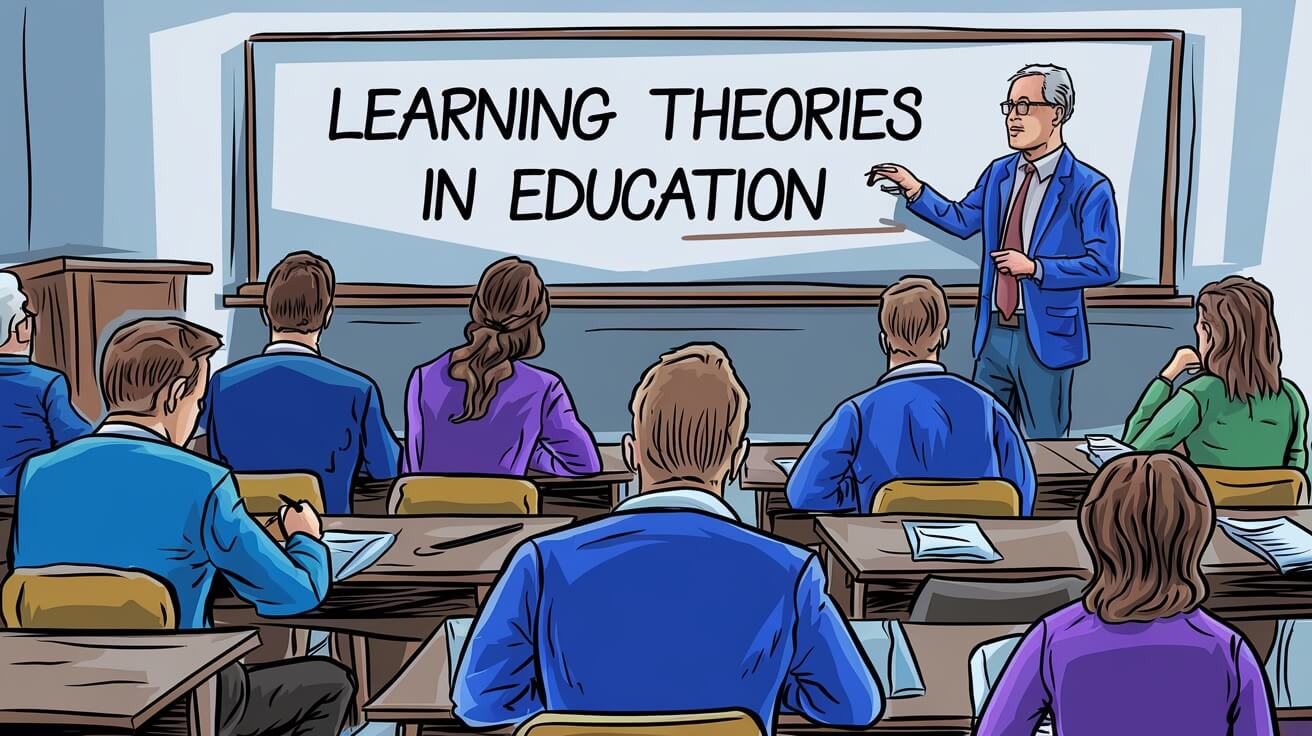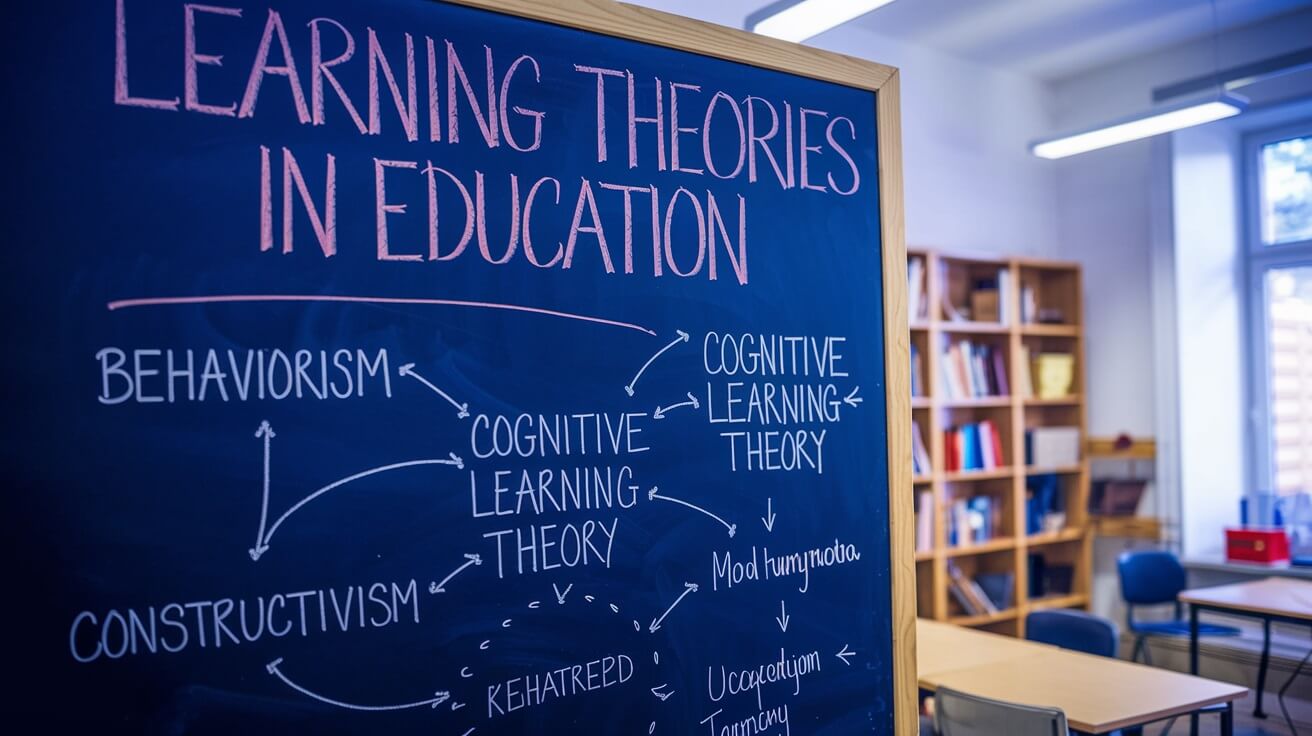
Top 15 Learning Theories in Education: A Comprehensive Guide for Teachers and Students
Introduction: Understanding Learning Theories
As an educator or student, have you ever wondered why some teaching methods resonate while others fall flat? It’s all about understanding how learning works. That's where learning theories come into play. These theories provide insight into how students absorb, process, and retain information. By grasping these concepts, you can transform your teaching methods, tailor your lessons, and make learning more effective for everyone involved.
This article explores the 15 most influential learning theories, from classic frameworks like behaviorism and cognitivism to modern approaches like connectivism. You’ll discover practical strategies for implementing these theories in the classroom and how they can revolutionize your Teaching. Let’s dive in!
Why do learning theories matter in education?
Learning theories aren’t just academic jargon but the backbone of effective Teaching. Understanding these theories helps you answer questions like:
- Why do some students learn better through hands-on activities while others excel with visual aids?
- What motivates a student to push through complex topics?
- How can teachers create a more inclusive and effective learning environment?
Benefits of Understanding Learning Theories
- Tailored Teaching: recognize and address diverse learning styles in the classroom.
- Enhanced Student Engagement: Apply strategies that keep students actively involved.
- Informed Curriculum Design: Use theory-backed methods for planning lessons.
By applying the principles from these theories, you can transform the educational experience, making learning more engaging and effective.

Top 15 learning theories
Each learning theory offers a unique perspective on how people learn. Here’s a detailed look at the key concepts and applications of each one:
1. Behaviorism: The Science of Observable Behavior
- Overview: Founded by John B. Watson and later expanded by B.F. Skinner's behaviorism focuses on observable behaviors and how the environment shapes them.
- Fundamental Principles: Conditioning (Classical and Operant), Reinforcement, and Punishment.
- Practical Applications: Use positive reinforcement like praise and rewards to encourage desired behaviors in the classroom.
- Example: rewarding students with extra playtime for completing their assignments on time.
2. Cognitivism: Understanding mental processes
- Overview: Cognitivism explores internal processes like thinking, memory, and problem-solving.
- Fundamental Principles: Schema theory, information processing models.
- Practical Applications: Use tools like concept maps and mnemonic devices to aid memory.
- Example: Teaching new vocabulary using flashcards to help students categorize and retain information.
3. Constructivism: Learning through Experience
- Overview: Developed by Jean Piaget and Lev Vygotsky, constructivism emphasizes that learners construct their understanding through experiences.
- Fundamental Principles: Active learning, social interaction, and scaffolding.
- Practical Applications: Use project-based learning where students solve real-world problems.
- Example: A science teacher guiding students through a hands-on experiment rather than lecturing.
4. Social Learning Theory: Learning by Observation
- Overview: Albert Bandura’s theory suggests that people learn by observing others and mimicking their behavior.
- Fundamental principles: modeling, imitation, and vicarious reinforcement.
- Practical Applications: Use role-playing activities to demonstrate positive behaviors.
- Example: A teacher using a class leader to model good behavior for peers.
5. Humanistic Learning Theory: Focusing on the Whole Student
- Overview: This essay, inspired by Carl Rogers and Abraham Maslow, emphasizes the importance of emotions and personal growth in learning.
- Fundamental Principles: self-actualization, intrinsic motivation.
- Practical Applications: Create a supportive learning environment focusing on students' well-being.
- Example: Encouraging students to set personal goals and reflect on their learning.
6. Connectivism: Learning in the Digital Age
- Overview: George Siemens proposed a theory for the digital age that focuses on learning through online networks and communities.
- Fundamental Principles: knowledge distributed across a network; the importance of technology in learning.
- Practical Applications: Use online discussion forums and digital resources to facilitate learning.
- Example: Students collaborating on projects using cloud-based tools like Google Workspace.
7. Experiential Learning: Learning by Doing
- Overview: David Kolb’s theory suggests that learning is a process where experience creates knowledge.
- Fundamental Principles: concrete experience, reflective observation, abstract conceptualization, active experimentation.
- Practical Applications: Field trips, hands-on labs, internships.
- Example: Students learn about plant biology through gardening activities.
8. Multiple Intelligence Theory: Recognizing Diverse Abilities
- Overview: Howard Gardner proposed this learning theory, which suggests that intelligence is not a single entity but rather a combination of multiple types, such as linguistic, logical-mathematical, spatial, and more.
- Fundamental Principles: There are eight types of intelligence, including interpersonal and intrapersonal.
- Practical Applications: Create lesson plans that cater to various types of intelligence, such as using music for auditory learners or physical activities for kinesthetic learners.
- Example: A math teacher using puzzles and games for logical-mathematical learners while using storytelling for those with linguistic intelligence.
9. Andragogy (Adult Learning): Learning for Grown-Ups
- Overview: Developed by Malcolm Knowles, Andragogy focuses on how adults learn differently than children, emphasizing self-direction and experience.
- Fundamental Principles: self-directed learning, relevance to life experiences, problem-centered learning.
- Practical Applications: Use case studies and real-world scenarios to help adults apply their learning.
- Example: In a professional development workshop, participants might analyze real-life business challenges to apply new skills.
10. Transformative Learning Theory: Learning through Perspective Change
- Overview: Jack Mezirow’s theory highlights that adults can change their perspectives through critical reflection, leading to deep, transformative learning.
- Fundamental Principles: Critical reflection, disorienting dilemmas, change in perspective.
- Practical Applications: Encourage learners to question their assumptions and engage in deep discussions.
- Example: A sociology class discussing cultural stereotypes to challenge preconceived beliefs.
11. Situated Learning Theory: Learning in Context
- Overview: Proposed by Jean Lave and Etienne Wenger, this learning theory suggests that learning is most effective in its real-world context.
- Fundamental Principles: communities of practice, authentic context, social interaction.
- Practical Applications: Create learning environments that mimic real-life settings.
- Example: Culinary students learn through hands-on experience in a working kitchen rather than just reading about cooking techniques.
12. Brain-Based Learning: Harnessing Neuroscience for Education
- Overview: This course focuses on how the brain learns naturally, emphasizing the role of emotions, memory, and the physical state of the brain in learning.
- Fundamental Principles: Emotion drives attention, repetition strengthens memory and the brain’s natural cycles.
- Practical Applications: Use movement and breaks to align with students' attention spans.
- Example: Incorporating short brain breaks during lessons to boost concentration and retention.
13. Inquiry-Based Learning: Questions Drive Learning
- Overview: This approach encourages students to ask questions and seek answers through exploration and investigation.
- Fundamental principles: student-led questioning, discovery, and problem-solving.
- Practical Applications: Use science experiments or research projects to let students explore their questions.
- Example: A history class where students choose a historical event to research and present their findings.
14. Problem-Based Learning (PBL): Solving Real-World Problems
- Overview: PBL focuses on students working on real-life problems, using research, collaboration, and critical thinking to find solutions.
- Fundamental Principles: problem-solving, student autonomy, interdisciplinary approach.
- Practical Applications: Assign projects where students address a community issue or design a product.
- Example: A class project where students develop a plan to reduce plastic waste in their school.
15 Blended Learning: The Best of Both Worlds
- Overview: Combines traditional face-to-face instruction with online learning, allowing flexibility and personalized pacing.
- Fundamental Principles: integration of online and offline learning; student control over time, place, and pace.
- Practical Applications: Complement in-class activities by using online resources like quizzes or videos.
- Example: A flipped classroom where students watch a lecture video at home and use class time for hands-on activities.

Comparing Traditional vs. Modern Learning Theories
As educational needs evolve, it’s essential to understand how traditional learning theories like behaviorism and cognitivism differ from modern ones like connectivism and blended learning.
| Theory | Focus | Approach | Example |
|---|---|---|---|
| Behaviorism | Observable behavior | Teacher-centered | Using rewards to encourage class participation. |
| Cognitivism | Mental processes | Structured learning | Using diagrams to teach complex concepts. |
| Constructivism | Active learning | Student-centered | Project-based learning. |
| Connectivism | Learning through networks | Digital, collaborative | Online discussions and social media learning. |
| Andragogy | Self-directed adult learning | Experience-based | Using case studies in professional development. |
| Transformative Learning | Perspective change | Reflection-based | Discussions challenge cultural beliefs. |
| Blended Learning | A mix of online and offline methods | Flexible, student-paced | Flipped classroom model. |
By blending these theories, educators can create a well-rounded approach that suits various learning needs and environments, from traditional classrooms to modern digital spaces.
How Digital Advancements Shape Learning Theories
In today’s digital age, the landscape of education is changing rapidly. Here’s how technology impacts the application of learning theories:
- Online Learning Platforms: This rise of online learning courses aligns with connectivism, as learners build knowledge through online networks and communities.
- Gamification: Educational apps use behaviorism concepts, where rewards and badges are given for completing tasks.
- Virtual Reality (V.R.) supports experiential learning by immersing students in simulations of real-world scenarios, making abstract concepts tangible.
Example of Digital Influence:
- A 2023 study found that courses integrating a mix of connectivism and experiential learning had a 30% higher retention rate than traditional lectures, thanks to their interactive and social nature.
Practical Tips for Teachers (Expanded)
Implementing learning theories can transform your Teaching. Here’s how you can apply these theories to enhance your classroom:
- Behaviorism: Use behavior charts and reward systems to encourage positive behavior.
- Cognitivism: Use mind maps and structured note-taking techniques.
- Constructivism: Design inquiry-based projects where students solve real-world problems.
- Social learning theory: organize peer tutoring sessions.
- Multiple Intelligences: Create activities that cater to different types of intelligence, like group discussions for interpersonal learners and puzzles for logical learners.
- Transformative Learning: Encourage critical thinking through reflective journals.
- Blended Learning: Use digital tools like Kahoot for quizzes alongside traditional teaching methods.
Conclusion:
Understanding and applying these learning theories isn’t just about theory—it’s about creating a more prosperous, inclusive learning environment. As you explore different approaches, you’ll find new ways to reach every student, whether they learn best through hands-on activities, digital tools, or reflective discussions.
The best part? You don’t have to choose just one theory. By combining these insights, you can make a dynamic classroom that adapts to your students' needs and prepares them for the future.
FAQs: Addressing Common Questions
- What is the most effective learning theory for diverse classrooms?
- Blended approaches, combining constructivism and cognitivism, often work well for diverse learning needs.
- How do learning theories apply to online education?
- Connectivism and constructivism are especially effective for digital learning, leveraging networks and interactive projects.
- Which theory helps students with learning disabilities?
- Humanistic and brain-based learning approaches can address individual needs and make a supportive environment for students with learning challenges.
- What is the difference between behaviorism & cognitivism?
- Behaviorism focuses on observable actions, while cognitivism emphasizes mental processes like memory and problem-solving.
- How can teachers use social learning in the classroom?
- Teachers can harness the power of observation and modeling through peer collaboration, role-playing activities, and mentorship programs.






